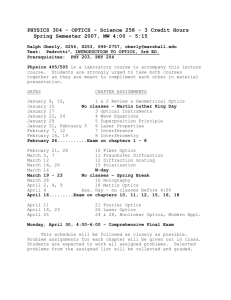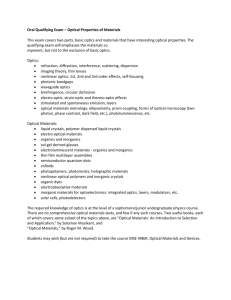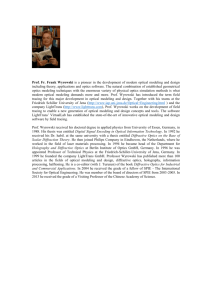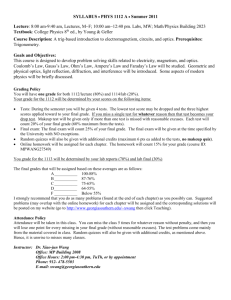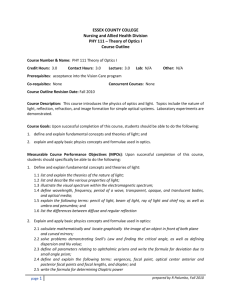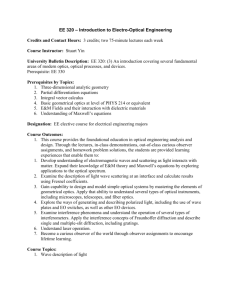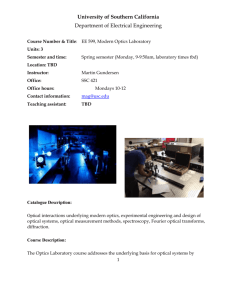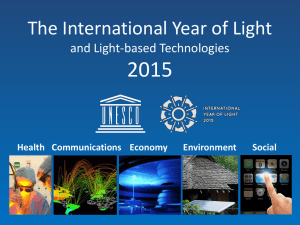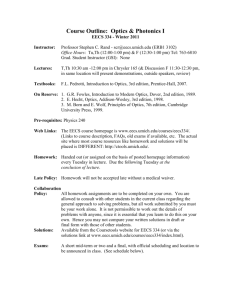ECE 578
advertisement
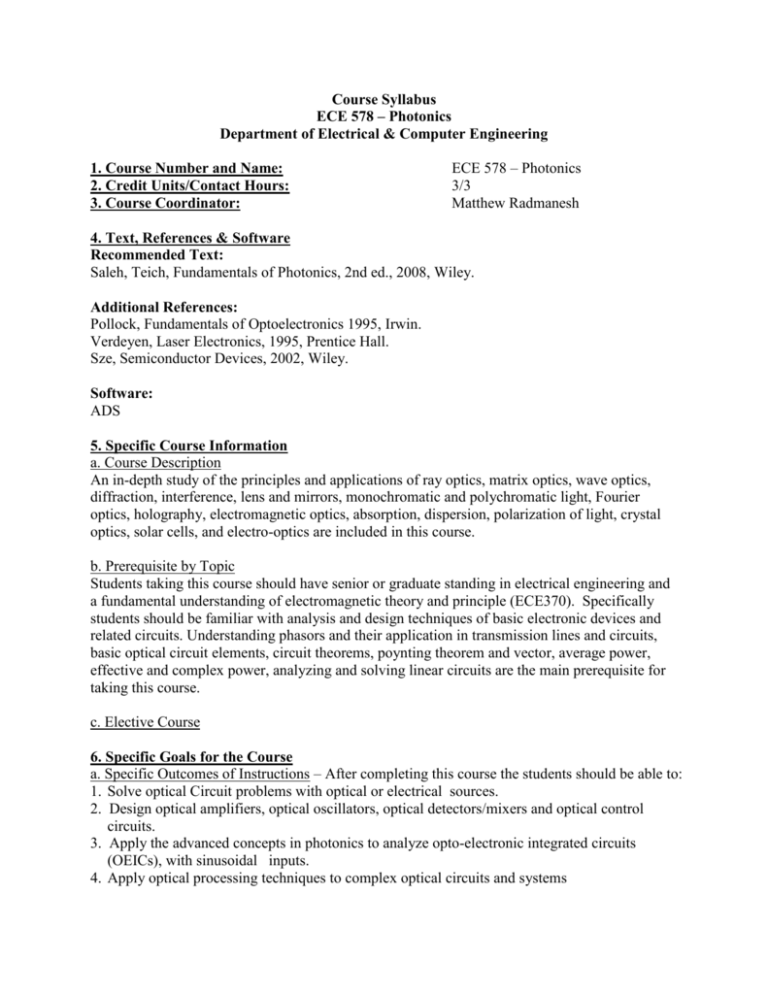
Course Syllabus ECE 578 – Photonics Department of Electrical & Computer Engineering 1. Course Number and Name: 2. Credit Units/Contact Hours: 3. Course Coordinator: ECE 578 – Photonics 3/3 Matthew Radmanesh 4. Text, References & Software Recommended Text: Saleh, Teich, Fundamentals of Photonics, 2nd ed., 2008, Wiley. Additional References: Pollock, Fundamentals of Optoelectronics 1995, Irwin. Verdeyen, Laser Electronics, 1995, Prentice Hall. Sze, Semiconductor Devices, 2002, Wiley. Software: ADS 5. Specific Course Information a. Course Description An in-depth study of the principles and applications of ray optics, matrix optics, wave optics, diffraction, interference, lens and mirrors, monochromatic and polychromatic light, Fourier optics, holography, electromagnetic optics, absorption, dispersion, polarization of light, crystal optics, solar cells, and electro-optics are included in this course. b. Prerequisite by Topic Students taking this course should have senior or graduate standing in electrical engineering and a fundamental understanding of electromagnetic theory and principle (ECE370). Specifically students should be familiar with analysis and design techniques of basic electronic devices and related circuits. Understanding phasors and their application in transmission lines and circuits, basic optical circuit elements, circuit theorems, poynting theorem and vector, average power, effective and complex power, analyzing and solving linear circuits are the main prerequisite for taking this course. c. Elective Course 6. Specific Goals for the Course a. Specific Outcomes of Instructions – After completing this course the students should be able to: 1. Solve optical Circuit problems with optical or electrical sources. 2. Design optical amplifiers, optical oscillators, optical detectors/mixers and optical control circuits. 3. Apply the advanced concepts in photonics to analyze opto-electronic integrated circuits (OEICs), with sinusoidal inputs. 4. Apply optical processing techniques to complex optical circuits and systems b. Relationship to Student Outcomes This supports the achievement of the following student outcomes: a. An ability to apply knowledge of math, science, and engineering to the analysis of electrical engineering problems. b. An ability to design and conduct scientific and engineering experiments, as well as to analyze and interpret data. c. An ability to design systems which include hardware and/or software components within realistic constraints such as cost, manufacturability, safety and environmental concerns. e. An ability to identify, formulate, and solve electrical engineering problems. g. An ability to communicate effectively through written reports and oral presentations. i. A recognition of the need for and an ability to engage in life-long learning. k. An ability to use modern engineering techniques for analysis and design. m. An ability to analyze and design complex devices and/or systems containing hardware and/or software components. n. Knowledge of math including differential equations, linear algebra, complex variables and discrete math. 7. Topics Covered/Course Outline 1. Overview of Optics 2. Ray 3. Wave Optics 4. Fourier Optics 5. Electromagnetic Optics 6. Wave polarization 7. Electro-Optics 8. Solar Cells and Circuits Prepared by: Matthew Radmanesh, Professor of Electrical and Computer Engineering, October 2011 Ali Amini, Professor of Electrical and Computer Engineering, March 2013

